Kalanchoe blooming today is very popular among lovers of decorative succulents, which are also useful. The juice from the leaves of the plant has healing properties for human health. The care of Kalanchoe at home is not difficult, it is important to know the features of its cultivation.
Material Content:
Types and varieties of Kalanchoe
There are a large number of species and varieties of Kalanchoe. At home, only a few of them are grown. The main interest are several varieties of plants.
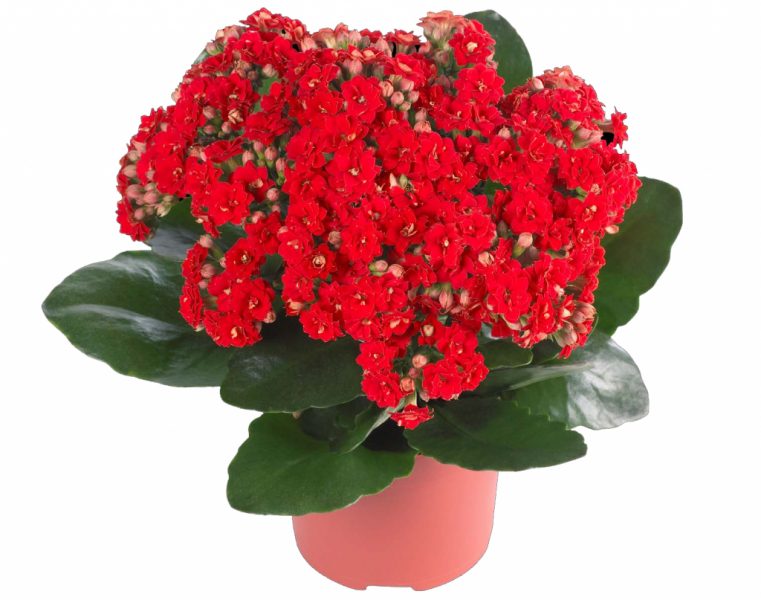
- Kalanchoe Blossfeld is the most common species, which is presented in most flower shops.
- Dergemona is a demanding plant that is more suitable for an experienced grower. It is often called "indoor ginseng."
- Rosalina is an elegant terry variety, characterized by unpretentiousness. To form new buds, it is necessary to remove wilted flowers from peduncles.
- Kalandiva - the variety has a very rapid flowering, not even under ideal conditions. Despite the high decorativeness, the plant is very unpretentious.
Whatever variety of Kalanchoe is selected, it is necessary to create the necessary growth conditions for the flower, which will allow it to remain in good condition for a long time. Even unpretentious varieties need to ensure a quality life.
Basic requirements for growing Kalanchoe
In general, growing Kalanchoe is not difficult. In order for the flower to grow successfully, it needs a regular change of the pot as it grows, timely watering and care.Do not expose the plant to extreme drops and temperature rises. For a flower, the usual room temperature is optimal, but just do not put it on the battery and on a cold windowsill.
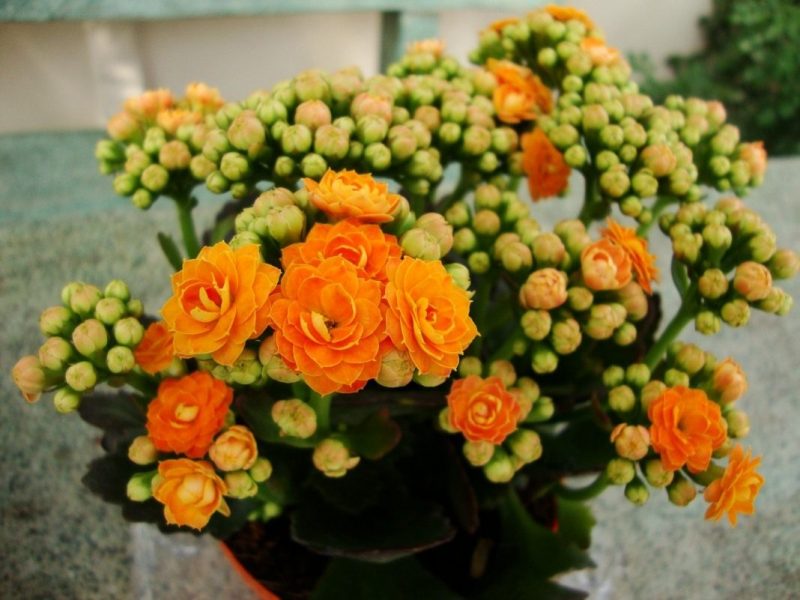
In winter, the temperature should not be lower than 12-15 degrees. Not too demanding on light, Kalanchoe can grow well even in rooms that are not suitable for other plants because of its shade. Sunlight is not necessary for the flower, and it feels great even with a normal fluorescent lamp, delighting with rapid flowering.
Read also: home care for asparagus
Home Care
To create optimal conditions for Kalanchoe, you should familiarize yourself with the basic requirements of the plant and recommendations for caring for it. With good maintenance, it can bloom year-round.
Ground and pot requirements
Soil for Kalanchoe requires slightly acidic. If you use a ready-made substrate for succulents, which is sold in garden shops, you need to dilute it 1/5 part with fine sand. Better, of course, to prepare the soil yourself.

For this, such components are mixed in equal parts:
- humus;
- sand;
- charcoal;
- turf.
Additional fertilizing during the preparation of soil for Kalanchoe is not required, since at first the plant will be provided with nutrients that are rich in coal and humus, and then regular feeding will compensate for their lack.
The pot for the plant requires a wide and deep enough so that the roots do not tuck. You can use plastic or ceramic dishes. It is better to use a new tank or one that has been frozen during the winter on the street. Without this, it is highly likely that the flower can become ill due to spores of fungi remaining on the walls of the pot after the last plant.
Watering, fertilizing and fertilizing
Despite the fact that the plant is home to arid areas, at home it needs to be provided with regular irrigation with room-water at room temperature. In summer, Kalanchoe consumes more water, in winter less. Watering is carried out not according to the regime, but as necessary. The fact that it is time to water the plant is determined by the moisture content of the topsoil. If it is dry, you need hydration.
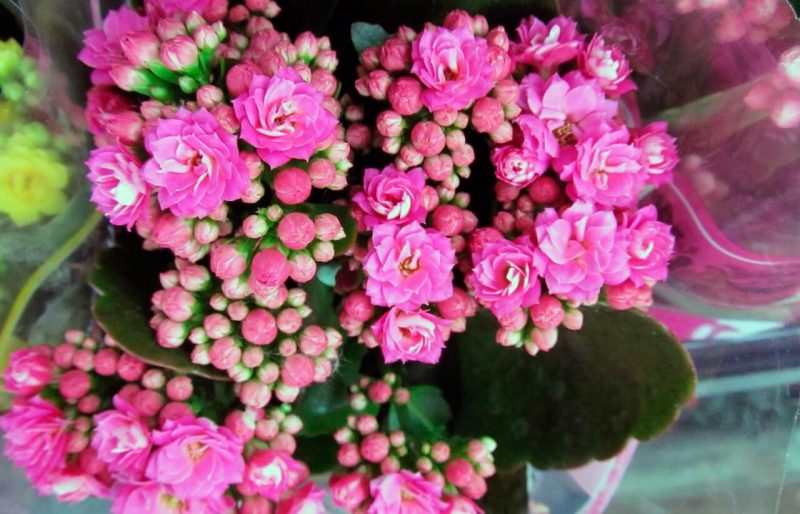
Spend it, watering the flower along the edge of the pot. You can also immerse the Kalanchoe container in a jar of water for 20 minutes so that the soil can be fed. If the soil is wet, you should not water it in reserve, as this will lead to the death of the flower due to rotting of the roots. The boggy plant does not tolerate at all.
Top dressing is necessary only in the spring-summer period. It is carried out once a week. For the flower, special dressings for succulents are used. You can also use complex mineral fertilizers top dressing for indoor plants and a solution of rotted bird droppings, which is diluted in the ratio of 1:30.
Location, lighting and humidity
It is optimal to choose a place for a flower that is bright, but without direct sunlight. The optimal length of daylight hours is 12 hours, and therefore, in the fall and winter, keep the Kalanchoe in a room with the highest illumination. It is impossible for a flower to be exposed to drafts, which are fatal to it.
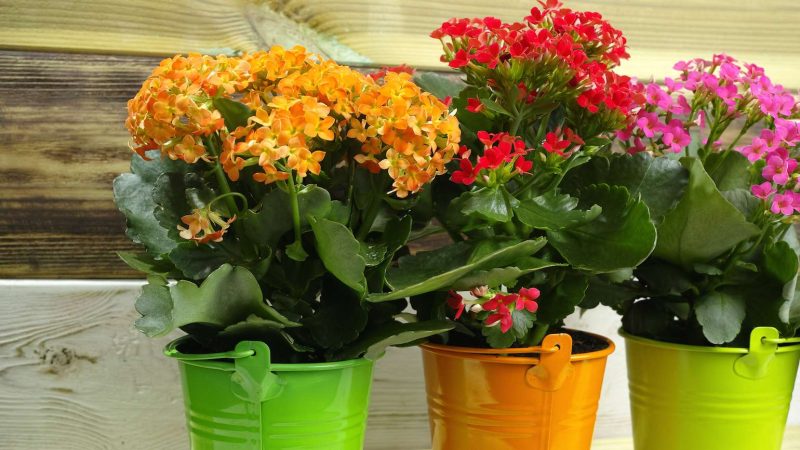
Dry air is not dangerous for the plant, as Kalanchoe easily suffers from a moisture deficit. At the same time, the culture can tolerate high humidity.
air, but not soil.
Flowering and pruning Kalanchoe
Flowering of Kalanchoe falls in the fall and can last for a month, and in some varieties and two months. After all the flowers have wilted, pruning is carried out if necessary. It is necessary to do this, since in a year a flower can add up to 30 cm in height and width and become very voluminous. Uncontrolled growth also leads to a deterioration in its appearance.
Pinch young plants at the time of active vegetation to give them an attractive shape. For this purpose, 2 top leaves are removed from the shoots. The procedure is carried out for several years until the flower becomes what it wants to see. Sanitary pruning involves the removal of 1/5 the number of leaves and shoots.
When forming a Kalanchoe in the form of a tree, only one strongest shoot is left on the plant, and all the side shoots are cut off. The crown of the main stem does not pinch with such pruning.
Tip. After flowering, the peduncles must be removed. For a month: set the plant on a shady windowsill, do not water. Then move it to its original place, provide watering, and it will bloom again.
Transplant at home
Young plants are transplanted annually, as their development is very rapid, and they need a constant increase in pot area. After 3 years, Kalanchoe develops more slowly, and she needs a transplant only 1 time in 3-4 years, since the root system, even of an adult plant, continues to grow and at some point the pot grows. If the Kalanchoe begins to turn yellow, an increase in pot area is most likely urgently needed. The optimal time for transplantation is the beginning of spring.
At the bottom of the pot, a 2 cm thick expanded clay layer is made. Then the soil is poured. The plant is transplanted by transshipment, trying not to disturb the existing lump of land. After the flower is transplanted, it is watered abundantly. Further watering is carried out in the same way as always.
After the purchase, Kalanchoe should be transplanted into a new pot, regardless of the season, but only after the plant has completely faded. If the condition of the plant rapidly deteriorates, and it must be urgently transferred to another pot, it is necessary to part with the flowers. Cut them with sharp scissors.
Features of breeding Kalanchoe
At home, the propagation of Kalanchoe is very simple. If the bush is in good condition and proper care is provided for it, then you can get a new plant using cuttings or rooting of the leaf.
The cuttings are cut from a young shoot so that it has at least 3 leaves. Use sterile scissors for cutting. The cut stalk is put into the water. So it will let out roots much faster, and its development process will be easier to control than when planting in the ground immediately after cutting. As soon as the roots grow to a length of 2-3 centimeters, the stalk is planted in soil suitable Kalanchoe.
When propagated by a leaf, a well-developed leaf with a petiole is taken and dug in a moist soil suitable for Kalanchoe. Further, it is important to ensure that the soil does not dry out. If everything is done correctly, the plant will release the roots in 2 weeks, and in a month a rosette of small leaves will appear. Care for Kalanchoe after rooting as an adult plant.
Pests, diseases and treatments
Diseases that affect Kalanchoe are few. Most often, against the background of excessive moisture, you can encounter bacterial infections. After watering is normalized, the disease is eliminated. Pests sometimes become a serious problem for the grower.
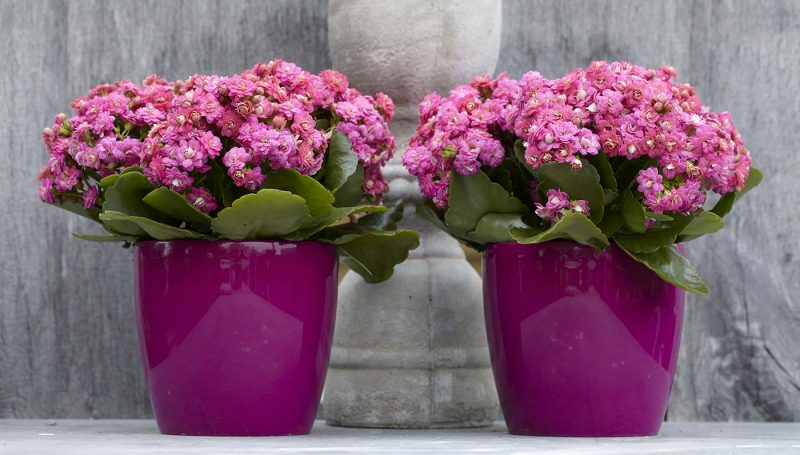
On Kalanchoe can parasitize:
- scale shield;
- spider mite;
- aphid.
To eliminate pests, it is necessary to treat the plant with one of the special compounds whose action is directed against flower parasites. After this, Kalanchoe will quickly recover from damage that has been done.
With proper care, Kalanchoe at home grows and multiplies perfectly, delighting the owner with a beautiful and lush flowering. Do not forget about the value of the healing properties of Kalanchoe.












